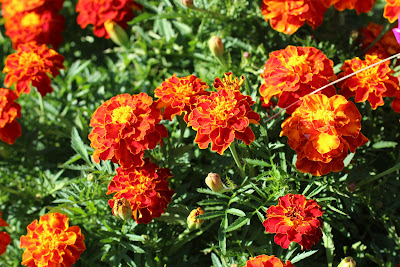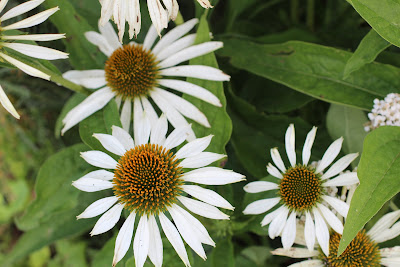The Katydid (Caedicia sp.) resting on Tomatillo leaf
I have a new respect for the insect Katydid since reading the book The Garden Jungle by Densey Clyne. She talks about them thus: I share the beauty of dahlia flowers in the garden with a gentle vegetarian katydid with wings like tapering green leaves, a small head and inquisitive antenna. While it is the colour and the shape of the dahlias that I enjoy , the katydid enjoys the flavour of the petals, although when dahlias are out of season it feeds on almost any kind of foliage. The katydid never makes its presence felt in the extroverted manner of some of its relatives, but creeps quietly about feeding or gazing into space with its beautiful pale green eyes.
What I find interesting about them is that they have the ability to change colour depending on what they are feeding on, as a form of camouflage. So you can come across bright pink ones which have been feeding on rose petals and the new red shoots of rose plants. They have an interesting call as well which is a sort of zip zip sound. There is a lesson to be learned here and that is; share your garden with lots of insects and don't be too worried by a few holes in the leaves of your prize plants.
I have a new respect for the insect Katydid since reading the book The Garden Jungle by Densey Clyne. She talks about them thus: I share the beauty of dahlia flowers in the garden with a gentle vegetarian katydid with wings like tapering green leaves, a small head and inquisitive antenna. While it is the colour and the shape of the dahlias that I enjoy , the katydid enjoys the flavour of the petals, although when dahlias are out of season it feeds on almost any kind of foliage. The katydid never makes its presence felt in the extroverted manner of some of its relatives, but creeps quietly about feeding or gazing into space with its beautiful pale green eyes.
What I find interesting about them is that they have the ability to change colour depending on what they are feeding on, as a form of camouflage. So you can come across bright pink ones which have been feeding on rose petals and the new red shoots of rose plants. They have an interesting call as well which is a sort of zip zip sound. There is a lesson to be learned here and that is; share your garden with lots of insects and don't be too worried by a few holes in the leaves of your prize plants.





































